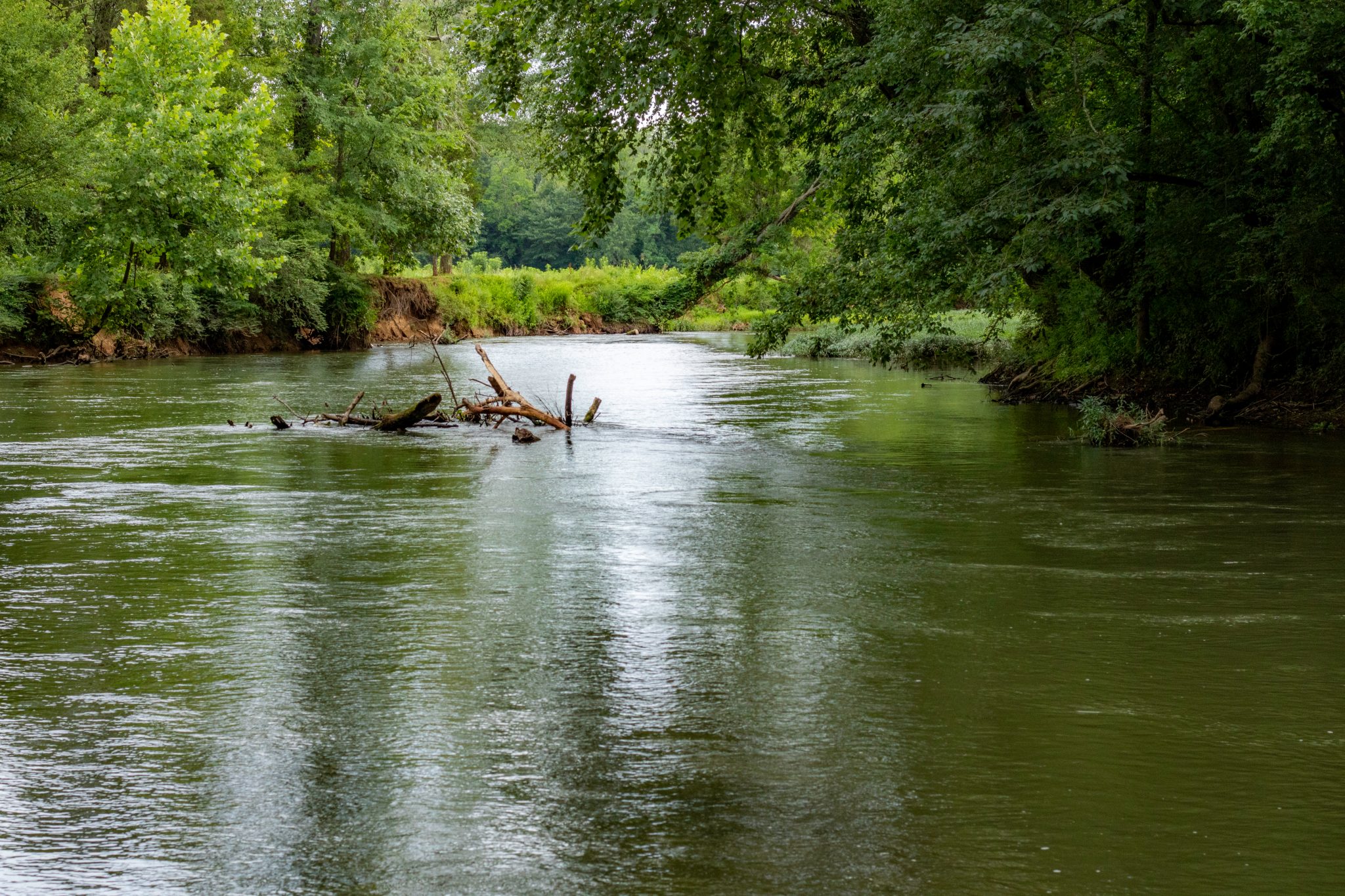Fish & Water

The shorelines of lakes, ponds, and rivers are valuable to people and wildlife. However, the qualities that make them attractive to wildlife may differ from what makes them attractive to humans. While people enjoy these bodies of water for recreation and relaxation, they have significant importance as wildlife habitats. Shorelines with mature forests are naturally high-quality habitats when undisturbed by buildings and recreational activity such as boating and swimming. However, shorelines are often developed for residential use, which is always accompanied by various recreational activities. The naturally occurring woody debris is often removed to make way for swimming or easy access to the water. What people may see as a harmless act greatly affects the ecosystem below the water’s surface.
Aquatic Ecosystems
Trees and limbs that fall or are blown into the water provide habitat to aquatic ecosystems. While people may believe they are providing a service by removing this floating debris, the reality is that fish and other aquatic life need the habitat that floating and sunken limbs and trees provide. This waterlogged wood plays an important role to fish and other aquatic creatures. Fish will often use the large wood for spawning, feeding, and cover. The limbs of sunken trees protect small fish and the larger, coarse material provides cover for predators waiting to ambush their prey. Algae grows on the wood of limbs and trees and provides habitat for tiny aquatic organisms that fish feed on. These areas also create habitat for many waterfowl species, such as geese and blue heron.
These aquatic ecosystems and their toppled trees benefit people too. People fish around fallen trees because they know that is where they are most likely to catch fish. Easily locating the fish makes harvesting easier for pond management. All these actions support the entire food chain.
Preserving and Creating Habitats
It is important that people help preserve and create habitats for aquatic ecosystems. They improve water quality, and they act as sponges by absorbing flood waters. They also produce a variety of natural products such as fish, shellfish, ducks, geese, and timber.
People have been able to mimic habitat for aquatic species by submerging Christmas trees, wooden pallets, and other construction debris. There are also many commercially-available habitats that are constructed of plastic or recycled materials that work equally well. They often provide habitat to ponds, allowing baitfish to gather when they would typically be scattered. This cover also has tremendous surface area where algae, bacteria, and fungi can grow, providing food to insects and other animals.

